This session will present several projects currently underway in Nunavik. We will present the results of a new geological survey by Géologie Québec (MRNF) in the Deception Bay area, new geochronological data and interpretations in the supracrustal units of the Ungava Orogen, and a new understanding of the mafic units in the Northern Domain.
Nunavik: New Geoscientific Advances and Mineral Potential
Tuesday, November 19, 2024
Room 403
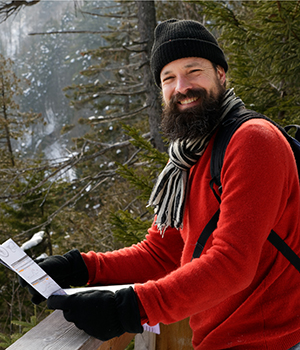
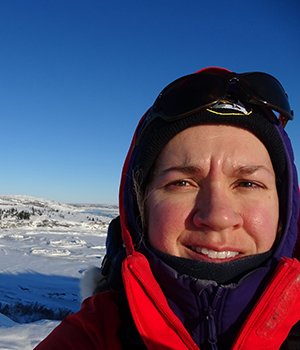
9:30 a.m.
Mineral Exploration in Nunavik: An Overview and Update

The first part of this presentation provides a brief description of the Nunavik Mineral Exploration Fund and its most recent activities. The second part highlights most up-to-date exploration projects that have taken place in Nunavik in the summer of 2024, as well as previous years projects.
9:50 a.m.
Geology of the Deception Bay Area, Ungava Orogen, Nunavik, Quebec, Canada
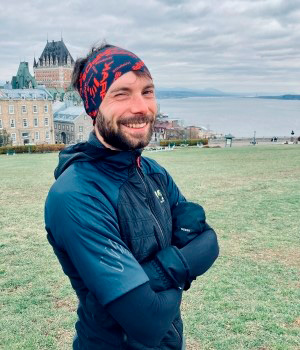
MRNF
This new geological survey at scale 1:85,000 was carried out in the summer of 2023 in the Deception Bay area (NTS sheets 35G14-E, 35G15-N, 35J02, 35J03-E, 35J06-S and 35J07-S), located approximately 50 km SE of the village of Salluit, Nunavik. The aim of the project was to acquire new geological knowledge of the Ungava Orogen (Churchill Province), a segment associated with the Paleoproterozoic Trans-Hudson Orogeny.
The mapped area comprises the contact between two of the major lithotectonic domains of the Ungava Orogen: the Kovik Domain, composed mainly of Archean basement rocks, and the Northern Domain, composed of Paleoproterozoic sedimentary, volcanic and intrusive rocks. The North Domain, which structurally overlies the Kovik Domain, consists mainly of mafic to ultramafic intrusive rocks in the mapped area, associated with lesser amounts of metavolcanic and metasedimentary rocks. These supracrustal rocks surround and unconformably overlie the Archean basement. The Kovik Domain consists of an Archean gneissic basement that has been affected by magmatic and tectonometamorphic episodes in the Palaeoproterozoic.
The entire region is characterized by a number of deformation episodes, which are manifested in polyphase folding recognized at both the local and regional scale. Structural analysis reveals fold interference patterns that control the overall architecture of the Deception Bay area, including the continuity of supracrustal rock bands that occupy windows through the Archean basement. The deformation is associated with regional medium-temperature, medium-pressure metamorphism, evolving from the greenschist facies in the south to the granulites facies in the north. The tectonometamorphic evolution of the area is an important factor for its mineral exploration. Early extensional structures and the boundaries of lithotectonic domains are ideal locations for the emplacement of magmas prospective to the emplacement of critical metals and rare earth mineralization.
10:10 a.m.
Revisiting the Paleoproterozoic Ungava Orogen: Detrital Geochronology and Its Implications for Paleogeographic Reconstructions
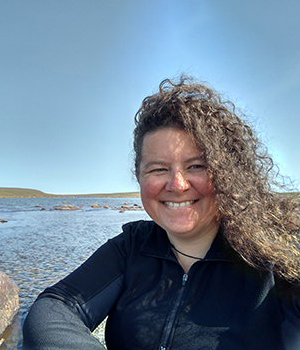
The Paleoproterozoic Ungava Orogen, a branch of the Trans-Hudson Orogen located at the northeastern boundary of the Superior Craton (Nunavik, Quebec, Canada), is thought to contain one of the oldest recorded tectonic environments representative of a complete Wilson cycle. Its foreland domain, the Cape Smith fold-and-thrust belt, consists of the para-autochthonous Southern Domain (SD), which is overthrusted by the allochthonous Northern Domain (ND). The volcano-sedimentary sequences within the SD have been interpreted to have formed along the margin of the Superior Craton during plume-induced and/or tectonic rifting events. On the other hand, the ND has traditionally been considered a remnant of the Manikewan oceanic lithosphere, including arc, ophiolitic, and accretionary wedge material, representing the suture zone between the Superior Craton and the Churchill Province. Nonetheless, recent investigations have highlighted the significance of plume-related magmatism in the development of both the SD and ND.
In this study, we provide a novel detrital zircon provenance dataset to better understand sediment sources within the Paleoproterozoic metasedimentary sequences. Our findings indicate distinct age distributions between the SD and ND. The metasedimentary rocks in the SD display only Archean provenance (>2.6 Ga zircon populations), consistent with a sedimentary source from the Superior Craton. In contrast, the ND metasedimentary rocks exhibit both Archean and Paleoproterozoic provenance (c. 3.2-1.8 Ga), suggesting detrital input from the Churchill Province. These results confirm the allochthonous nature of the ND relative to the Superior Craton but suggest that it formed along the Churchill plate margin, contradicting earlier interpretations of an intra-oceanic origin.
Combined with recent reinterpretations of volcanic and plutonic ND rocks as plume-related marginal formations, our data point to the absence of intra-oceanic suture material. This necessitates a reassessment of the previous regional paleogeographical reconstructions. We propose that the SD and ND formed on opposite sides of a continental plume-related basin. Although the lack of exotic suture zone material and the dominant influence of mantle plume magmatism cast doubt on whether the Ungava Orogen developed through a classic Wilson Cycle, definitive exclusion of an oceanic basin cannot be concluded without further evidence.
10:30 a.m.
Break
10:45 a.m.
The geological record of Precambrian mid-ocean ridges; revisiting the Purtuniq ophiolite, Ungava Orogeny
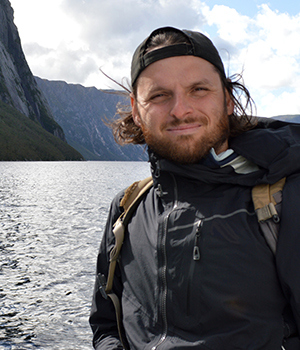
Université Laval
Sheeted dyke complexes (SDC) are the main geological records providing direct evidence of the formation of oceanic crust. Their distribution in the history of the Earth is therefore used to estimate the age of onset of plate tectonics as a mode of planetary convection. However, the criteria used to identify SDCs are rarely applied rigorously. For example, the formation of SDCs in a mid-ocean ridge implies that: a) the dykes account for more than 90% of the complex; b) they fed the overlying volcanic sequences and are therefore geochemically cogenetic and contemporaneous with them; and c) they are derived from juvenile magmas, without continental influence.
In this presentation, we revisit the Watts Group (WG) of the Palaeoproterozoic Ungava Orogen, Nunavik, also known as the Purtuniq ophiolite, which is thought to contain one of the oldest SDCs on Earth. The WG has been described as a sequence of pillow basalt overlying a plutonic suite of mafic and ultramafic cumulates, from which it is separated by a SDC. This package is thought to represent a crustal sequence formed in a mid-ocean ridge at around 2.0 Ga, then metamorphosed to the amphibolite facies during its imbrication at around 1.8 Ga. The SDC of the WG is often cited as evidence that plate tectonics was well established on Earth before the Palaeoproterozoic. A competing hypothesis, however, postulates that the formation of the WG is tied to an oceanic plateau context associated with the large Minto-Povungnituk igneous province, which is incompatible with a formation in a mid-ocean ridge.
We will present the results of an integrated study carried out during the DAGQ mapping of the DAGQ in the locality where the Purtuniq SDC was initially defined. Our results show that: a) the proportion of dykes is much lower than the 90% expected and that they are subordinate to the gabbro host rock, b) their geochemistry reveals strong contamination by a felsic component, which rules out any genetic relationship between, the dykes and the surrounding MORB-affinity basalts and amphibolites, and c) the presence of Archean xenocrystic zircons (with ages between 2981 and 2663 Ma), which rules out an oceanic intrusion. We therefore conclude that there is no SDC in the WG, the dykes being younger than the host gabbro and having intruded while the sequence was resting on the Superior Craton. In a broader context, we discuss the application of these criteria to other Precambrian SDCs and the implications for the direct geological record of mid-ocean ridges throughout the history of the Earth.
11:05 a.m.
The Lac Gayot Ni-Cu-PGE project: New insight and discoveries within the Venus Greenstone Belt

The Lac Gayot Project is exploration stage project in the Nunavik region of Quebec, primarily for Ni-Cu-Co-PGE mineralization. The project encompasses the majority of the ~2.88 GA Venus greenstone belt, a ~20 km long sequence of Komatiitic intrusives and volcanics within sequence of dominantly felsic volcanics & volcaniclastics, basinal sediments and iron formations with lesser mafic volcanics. The ultramafic stratigraphy can be broken into three main stratigraphic zones in ascending order:
1) Footwall sequence where intrusions cut the footwall granitoids and paragneisses;
2) Central sequence consisting of subvolcanic dykes and sills intruding dominantly felsic and sedimentary host rocks, and;
3) Upper volcanic sequence where extensive komatiitic volcanics are extruded with coeval sulphide dominant exhalative horizons and iron formations
Nickel sulphide mineralization is found across all three sequences within the Venus Greenstone Belt (VGB). The VGB hosts 11 surface showings that contain >3.0%Ni with five of those yielding >6.0%Ni. Originally discovered by Virginia Gold mines in 1998, the Gayot project was optioned by BHP, Breakwater Resources and KGHM international (up until 2012). A total of 121 holes drilled (18,176 m, average of ~150 m per hole) since the Lac Gayot discovery, 106 by major mining companies. Highlights from previous drilling include: 1.62% Ni, 1.18% Cu, and 1.92 g/t Pt+Pd+Au over 16.4 m in drill hole GA-00-023B and 9.38% Ni, 0.6% Cu, 0.15% Co, and 9.11 g/t Pt+Pd+Au in drill hole GA-02-053.
Ongoing exploration efforts by Perseverance Metals aim to identify and delineate high grade lenses of mineralization as well as identify new areas of mineralization on the Lac Gayot project.
